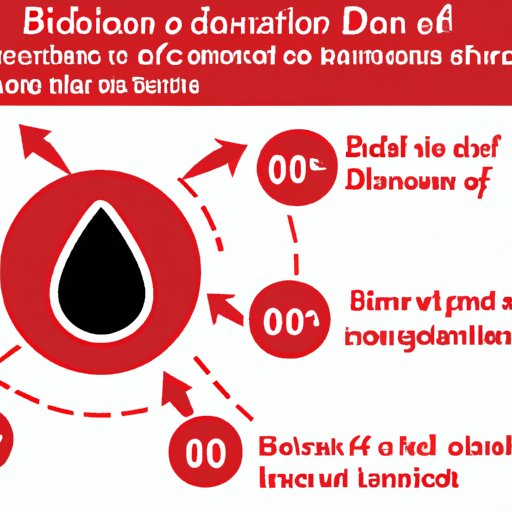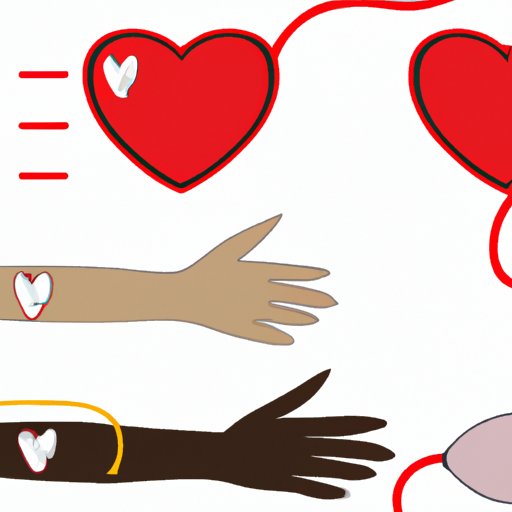
Introduction
Donating blood is a form of altruism that allows us to help others by giving a part of ourselves. Apart from the emotional satisfaction that comes with donating blood, many blood banks and donation centers offer financial incentives to encourage donations. In this article, we will explore the financial, emotional, and societal benefits of donating blood, as well as the different types of donations, eligibility criteria, and the donation process.
The Financial Benefits of Donating Blood
Donating blood is a free and voluntary process that does not involve monetary transactions. However, many donation centers offer incentives to encourage donors to give blood, especially during times of crisis or when blood supplies are low. Some centers offer gift cards, coupons, or discounts to popular stores or events, while others offer cash rewards ranging from 20 to 50 dollars per donation. It is important to note, however, that not all blood banks provide financial incentives for blood donation.
Donors who give blood for research or clinical trials may also receive financial compensation for their time and effort. This is different from regular blood donations since the blood collected is tested for specific diseases or genetic traits that are relevant to the study. The payment for this type of blood donation varies depending on the nature and length of the study, and the donor’s participation level.
How Donating Blood Can Save Lives
Blood transfusions are vital in treating a wide range of medical conditions, including trauma injuries, surgeries, anemia, cancer, and blood disorders. In the United States alone, 36,000 units of red blood cells are needed every day, while only 10% of the eligible population is donating blood regularly. This means that the demand for blood is much higher than the supply, and every donation can make a significant difference in someone’s life.
When a person donates blood, it is tested for infectious diseases like HIV, hepatitis B and C, syphilis, and West Nile virus. If the blood is safe to transfuse, it is separated into different components such as red blood cells, plasma, and platelets, depending on the patient’s medical needs. Red blood cells are used to replace lost blood due to surgery or injury, plasma is used to replace clotting agents in patients with liver diseases or coagulation disorders, and platelets are used to treat people with cancer or those undergoing chemotherapy.
The Different Types of Blood Donations
There are three main types of blood donations: whole blood donation, platelet donation, and plasma donation.
Whole blood donation is the most common type of donation and involves collecting one pint of blood from the donor’s arm. The blood is then separated into its components and used to treat multiple patients. Whole blood donations are typically done every 56 days, and the donor must be in good health, at least 16 years old, and weigh at least 110 pounds.
Platelet donation is a type of donation that involves collecting only platelets from the donor’s blood. Platelets are tiny blood cells that help the body form blood clots and stop bleeding. This type of donation is suitable for people with blood disorders, cancer, or those receiving chemotherapy or radiation therapy. The donation process takes about two hours, and the donor must have good veins and be able to tolerate the donation process.
Plasma donation is a type of donation that involves collecting only plasma from the donor’s blood. Plasma is the liquid part of the blood that contains proteins, clotting factors, and antibodies. This type of donation is beneficial for people with liver diseases, severe infections, or those who have been burned or injured. The donation process takes about an hour, and the donor must be at least 18 years old and weigh at least 110 pounds.
The Eligibility Requirements for Blood Donation
To ensure the safety of donors and patients, blood donation centers have specific eligibility criteria that donors must meet. These criteria include age, weight, health, and recent travel or medical history.
Donors must be at least 16 years old in most states and weigh at least 110 pounds. Some centers may require donors to be at least 18 years old, depending on the state’s regulations. Donors should also be in good health, free from infectious diseases, and have a hemoglobin level of at least 12.5 grams/dL. Donors who have recently traveled to areas affected by certain diseases such as malaria, or those who have received tattoos or piercings within the past 12 months, may not be eligible to donate blood.
Donors must also complete a donor health history questionnaire to assess their suitability for donation. The questionnaire includes questions about medical history, medications, surgery, sexual behavior, and other factors that could affect the donor’s health or the safety of the blood supply. Donors who are found to be ineligible or deferred from donation will be informed and provided with resources to address their medical concerns.
The Process of Donating Blood
The blood donation process typically takes about an hour, including registration, medical history review, blood collection, and post-donation refreshments.
First, donors must register with the blood center and provide their identification, such as a driver’s license or passport. They will then review their medical history with a staff member who will ask questions about medications, travel, and other relevant factors. After this, the donor’s vitals will be checked, including blood pressure, heart rate, and hemoglobin level.
The actual blood collection process takes about 10-15 minutes and involves inserting a needle into the vein of the donor’s arm. The blood is then collected in a sterile bag, and the donor is encouraged to rest for a few minutes. After the donation, the donor is provided with snacks and drinks to help replenish fluids and prevent dizziness or light-headedness.
The Emotional Benefits of Donating Blood
Donating blood can also have a positive impact on the donor’s emotional well-being. Many donors feel a sense of accomplishment and pride in knowing that they have helped save someone’s life. Others may feel a sense of community or altruism, knowing that their donation will benefit someone in need.
Some donors also report physical and mental benefits such as reduced stress and increased energy levels after donating blood. While these effects are not scientifically proven, they reflect the positive feelings that donating blood can create.

The Impact of Blood Donation on Society
The impact of blood donation on society is immense and far-reaching. Blood donations are used in emergency situations such as natural disasters or accidents where multiple injuries occur. They also help cancer patients, patients who require transfusions due to surgery, or those with chronic illnesses. Blood donation has helped save countless lives, and the need for blood is continuous, making it one of the most critical public health services.
Conclusion
Donating blood is a selfless act that has tangible and intangible benefits for both the donor and patients in need. In addition to the financial incentives, donors can feel the satisfaction of helping others and contributing to a noble cause. By following the eligibility criteria, donors can ensure that the blood supply is safe for patients and join the millions of people who have donated blood and made a difference in someone’s life.




